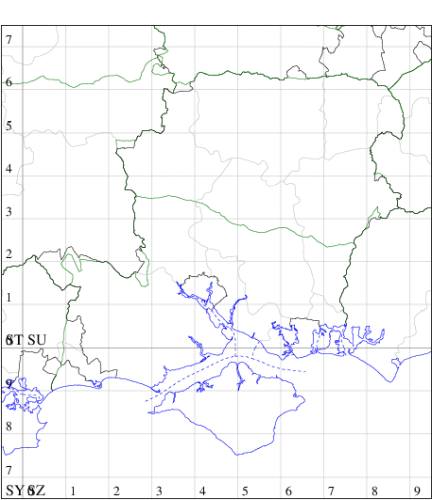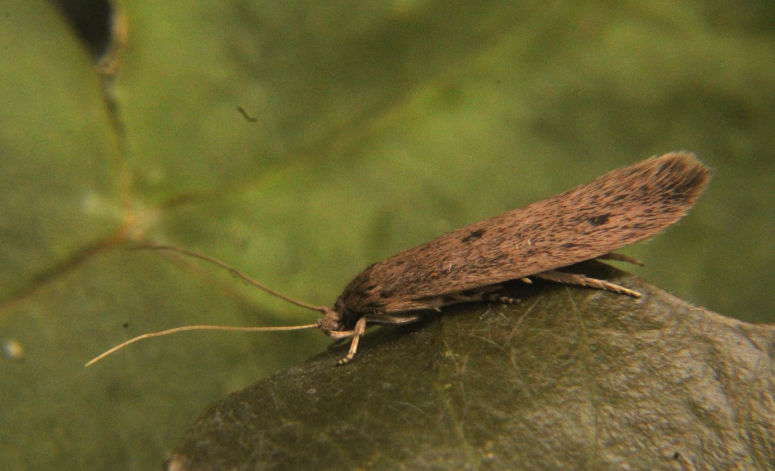Opogona sacchari
Checklist Number12.0451 [B&F: 0278]
Verification
Record requires retention of specimen until confirmed, and may require dissection. Consult with CMR if unsure
Classification
| Family: | Tineidae |
| Subfamily: | Hieroxestinae |
| Genus: | Opogona |
| Species: | sacchari |
| Authority: | (Bojer, 1856) |
Recorded infrequently through accidental importation in bananas from the Canary Islands, Azores and Madeira. According to DEFRA's UK Plant Health Risk Register it is occasionally intercepted in the UK with some outbreaks in glasshouses: the first occurrence was in a large public glasshouse in the South East of England in July 2017 (Opogona sacchari found in the United Kingdom). First recorded in Hampshire in 2023, when one was found on a doorstep in Blackwater in October 2023.
According to Wikipedia, it is native to the humid tropical and subtropical regions of sub-Saharan Africa, where it is also found in Madagascar, Mauritius, Réunion, Rodrigues Island, the Seychelles and St. Helena. It was first reported from the Canary Islands in the 1920s and in the 1970s, spread to South and Central America, and also first appeared in Europe. It has been reported from Florida since 1986.
The wingspan is 18–25 mm. Adults are bright yellowish brown.
The larvae feed on a wide range of plants, including bananas, pineapples, bamboo, maize and sugarcane. In glasshouses in European countries, it has been found infesting various tropical or subtropical ornamentals.
According to Wikipedia, it is native to the humid tropical and subtropical regions of sub-Saharan Africa, where it is also found in Madagascar, Mauritius, Réunion, Rodrigues Island, the Seychelles and St. Helena. It was first reported from the Canary Islands in the 1920s and in the 1970s, spread to South and Central America, and also first appeared in Europe. It has been reported from Florida since 1986.
The wingspan is 18–25 mm. Adults are bright yellowish brown.
The larvae feed on a wide range of plants, including bananas, pineapples, bamboo, maize and sugarcane. In glasshouses in European countries, it has been found infesting various tropical or subtropical ornamentals.


The abundance in each month is indicated as follows:
 No records
No records Very occasional
Very occasional Irregular
Irregular Uncommon
Uncommon Off-peak, but not unusual
Off-peak, but not unusual Off-peak, but not unusual
Off-peak, but not unusual Main flight time
Main flight time| J | F | M | A | M | J | J | A | S | O | N | D | |
|---|---|---|---|---|---|---|---|---|---|---|---|---|
| Adult |  |  |  |  |  |  |  |  |  |  |  |  |
| Larval |  |  |  |  |  |  |  |  |  |  |  |  |
Records by week (adult)
Records by week (larval)
VC12 North Hampshire
| Site | Date | Quantity | Recorder | Stage |
|---|---|---|---|---|
| Blackwater (SU85) | 27/10/2023 | one | Ben Dale | Adult |

